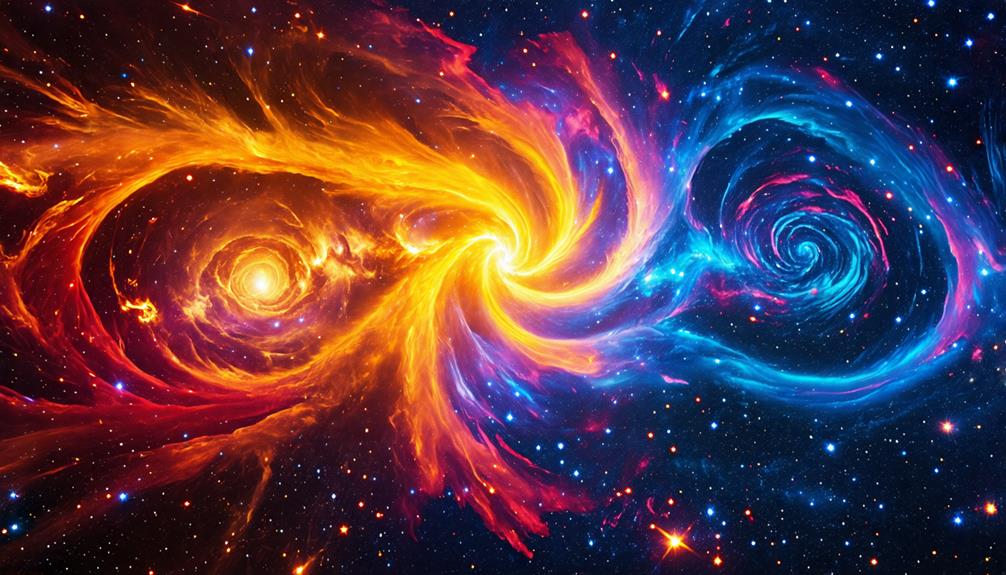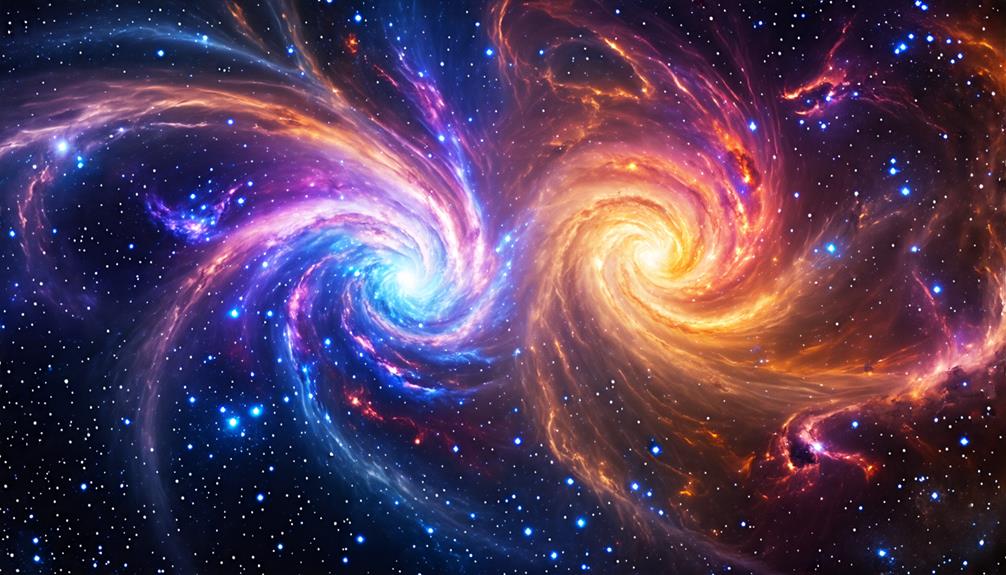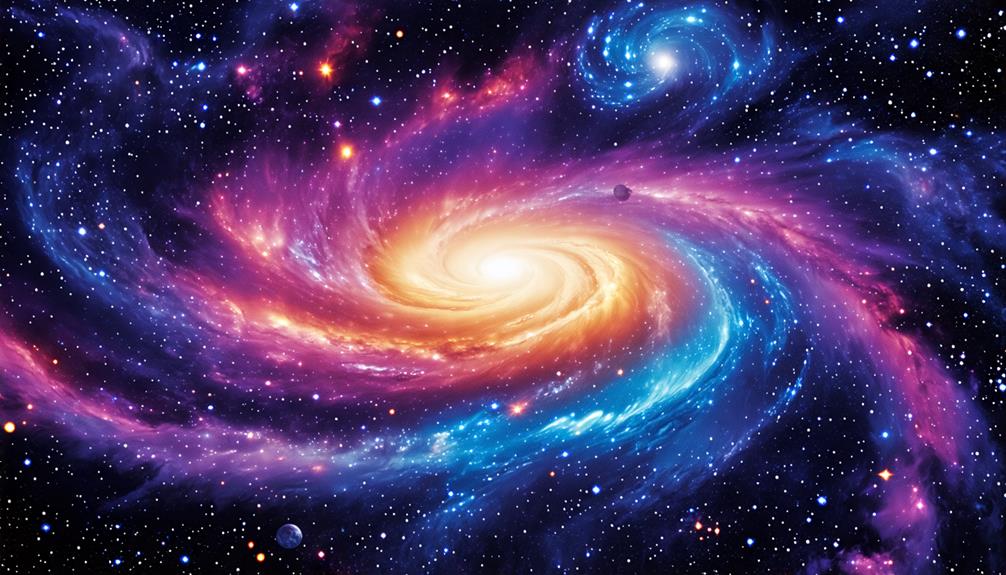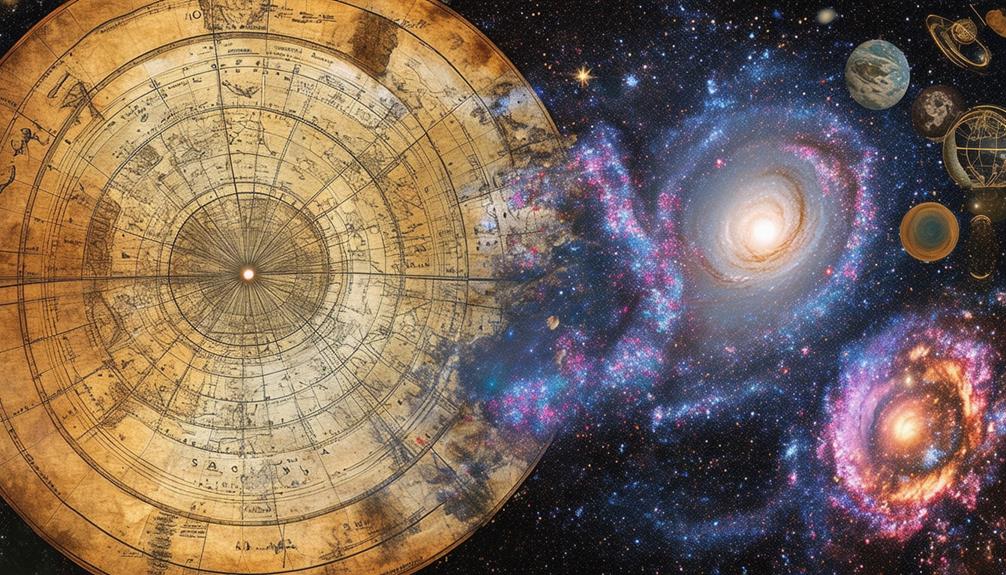Decoding Cosmic Microwave Background Anomalies: Clues From the Big Bang

You might wonder how anomalies in the Cosmic Microwave Background (CMB) can reshape our understanding of the universe's origins. These peculiarities, such as the Cold Spot, challenge conventional theories and suggest variations in the universe's structure. As researchers delve into these anomalies, they not only provide further evidence supporting the Big Bang theory but also prompt us to reconsider our understanding of cosmic evolution. What implications do these findings have for our current cosmological models, and how might they influence our perspective on the universe's future?
Historical Context of CMB
In 1965, Arno Penzias and Robert Wilson made a groundbreaking discovery when they detected the Cosmic Microwave Background (CMB), a faint microwave radiation that permeates the universe, serving as a remnant of the Big Bang. This discovery provided essential evidence that the universe was once in a hot, dense state approximately 13.8 billion years ago. Initially, the CMB exhibited a uniform temperature of about 2.7 K, suggesting an isotropic early universe. However, the implications of the CMB extended beyond uniformity; it confirmed predictions made by George Gamow and others about residual radiation from the Big Bang, which had faced skepticism at the time.
The significance of the CMB deepened with subsequent satellite missions, such as COBE, WMAP, and Planck. These missions enhanced our understanding of the CMB's properties, including the measurement of tiny fluctuations known as anisotropies. These fluctuations provide insights into the universe's structure and evolution. By studying the CMB, we engage with the remnants of the early universe, uncovering clues about the cosmos' origins and validating theories that shape modern cosmology.
Characteristics of CMB Anomalies

CMB anomalies reveal intriguing deviations from the expected uniformity of the cosmic microwave background radiation, suggesting variations in the early universe's matter density. One of the most striking examples is the Cold Spot, an area exhibiting unusually low temperatures, possibly indicating the presence of large-scale structures or voids that influence the observed CMB signals.
Another key anomaly is the alignment of quadrupole and octopole moments, which challenges the cosmological principle of isotropy, the assumption that the universe is the same in all directions. These deviations question the standard cosmological model and raise important issues about cosmic evolution.
Temperature fluctuations, typically around 100 microkelvins, further complicate our understanding of these anomalies. They may hint at density variations in the early universe and prompt scientists to explore potential new physics or modifications to existing theories. Cosmic inflation, the rapid expansion of the universe shortly after the Big Bang, might also play a role, as these variations could originate from processes during that period. CMB anomalies offer valuable insights, expanding our knowledge of the universe's formation and structure and pushing the boundaries of current cosmological models.
Advances in CMB Research

Recent advancements in cosmic microwave background (CMB) research have significantly enhanced our understanding of the universe's early conditions and structure. The Wilkinson Microwave Anisotropy Probe (WMAP) and the Planck satellite have been instrumental in this progress, providing crucial data on CMB anisotropies and temperature fluctuations. These satellite missions have led to notable breakthroughs, including:
- Enhanced angular resolution, with WMAP achieving better than 0.5° and Planck improving it to 0.16°.
- Precise measurements of anisotropies that corroborate the predictions of the Big Bang theory.
These advancements have enabled researchers to detect subtle temperature fluctuations in the CMB, providing valuable insights into dark energy and the conditions that existed shortly after the Big Bang. Ongoing projects like CMB-S4 aim to further enhance sensitivity and resolution, potentially unveiling more mysteries about our universe. As these developments unfold, they continue to reshape our understanding of cosmic phenomena and the fundamental forces driving the universe's evolution.
Significance of CMB Studies

The study of the Cosmic Microwave Background (CMB) is pivotal for understanding the origins and structure of the universe. It provides compelling evidence for the Big Bang theory and insights into cosmic evolution. The CMB captures a snapshot of the universe at approximately 380,000 years old, showing temperature variations that correspond to density fluctuations. These fluctuations are essential for understanding the formation of structures like galaxies and clusters.
CMB photons provide critical information about the universe's composition, revealing that ordinary matter constitutes only about 5% of the total mass-energy content. The rest is made up of dark matter and dark energy, accounting for roughly 26% and 69%, respectively. By analyzing the CMB, scientists can refine cosmological parameters, which describe the rate of cosmic expansion and offer insights into the universe's ultimate fate. Additionally, anomalies in CMB data challenge existing models, prompting researchers to reconsider fundamental aspects of cosmology. Therefore, CMB studies are crucial for reconstructing the universe's history and understanding the forces that influence its evolution.
Future Directions in Cosmology

Future advancements in cosmology will revolve around refining models of inflation and cosmic structure formation, particularly through the study of CMB anomalies. As you delve into this dynamic field, consider how emerging observational strategies will enhance our understanding:
- Projects like CMB-S4 will significantly increase sensitivity and resolution, potentially uncovering new physics.
- Cross-correlation techniques, which compare galaxy distributions with CMB lensing maps, will provide deeper insights into large-scale structure.
These efforts, supported by improved technology and collaborative research, promise to advance our knowledge of the universe's fundamental properties.
Conclusion
Investigating anomalies in the Cosmic Microwave Background (CMB) does more than uncover the universe's past; it challenges established theories and raises new questions. Features like the Cold Spot and other irregular patterns compel a reevaluation of the cosmological principle of isotropy and variations in matter density. As research progresses, these insights from the Big Bang become essential for refining our understanding of cosmic evolution. Your curiosity could reveal hidden mysteries of the universe, shaping the future of cosmology.




